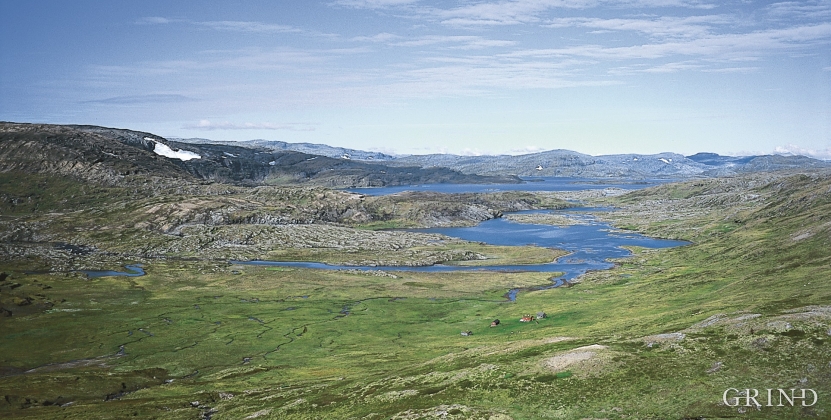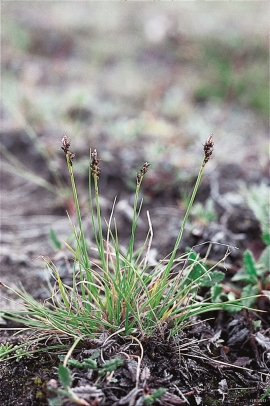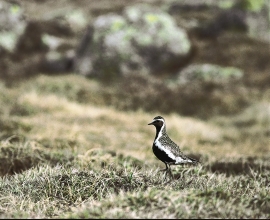Published: 06.09.2015 | Author: Bjørn Moe, Stein Byrkjeland
ALPINE GARDEN
From Kinsekvelven river and inward to Lake Veivatnet, we can wander through one of Hardangervidda's many fertile areas. A number of finicky plants grow here, and there are plenty of birds and fish. We can thank a lime rich soil for the diversity.
When the mountain avens is in flower in the beginning of July, the fields turn very white, like looking out over an alpine garden. It is worth taking your time in this garden, because a lot of other plants also grow on these schistose phyllite knolls. The little glacial sedge is not easy to spot. It is otherwise found in only a few places. This easterly plant does not grow in the mountains west of Hardangervidda. A range of mountain plants on the limestone plateaus by Lake Veivatnet have a similar distribution: arctic sandwort, snowy cinquefoil, twin-flowered violet, lapland lousewort and several others. A large part of Hordland's alpine plants grow in this area.
The good soil also makes the water in the fresh water lakes of better than average quality for the plateau. In both Veivatnet, Onkjelsvatnet, and Holmavatnet lakes, and further down by Lake Stavalivatnet, we find the amphipod crustaceans. Amphipods are a good source of nutrients for small nesting colonies of diving ducks, like the Greater Scaup and Black Scoter. But, these are also fond of the mountain trout, which can grow to be quite large in several of the local lakes. Net-fishing also helps to control the size that these fish are fished, and in this way the populations don't get too large.
Plovers are to be found everywhere amidst the heath. In moister areas and near the water the Dunlin enjoys optimal conditions, while species like the Dotterel and Lapland Bunting stay mainly on drier ground. This landscape is the westernmost nesting area in Europe for the Lapland Bunting. On more stony highland the Purple Sandpiper plays up, and some places there is a lot of Ptarmigan.
In the phyllite there are occurrences of rock crystals – clear quartz. Stones and minerals are protected in the National Park, as are the animals and plants.
- Bruton, D. L.; Harper, D. A. T.; Grunby, I.; Naterstad, J. 1984. Cambrian and Ordovician fossils from the Hardangervidda Group, Haukelifjell, southern Norway. Norsk Geologisk Tidsskrift 64:313–324.
- Riis, F.; Jorde, K. 1978. Geologisk kart over Norge, berggrunnskart Hårteigen – M 1:50.000. Norges geologiske undersøkelse.






